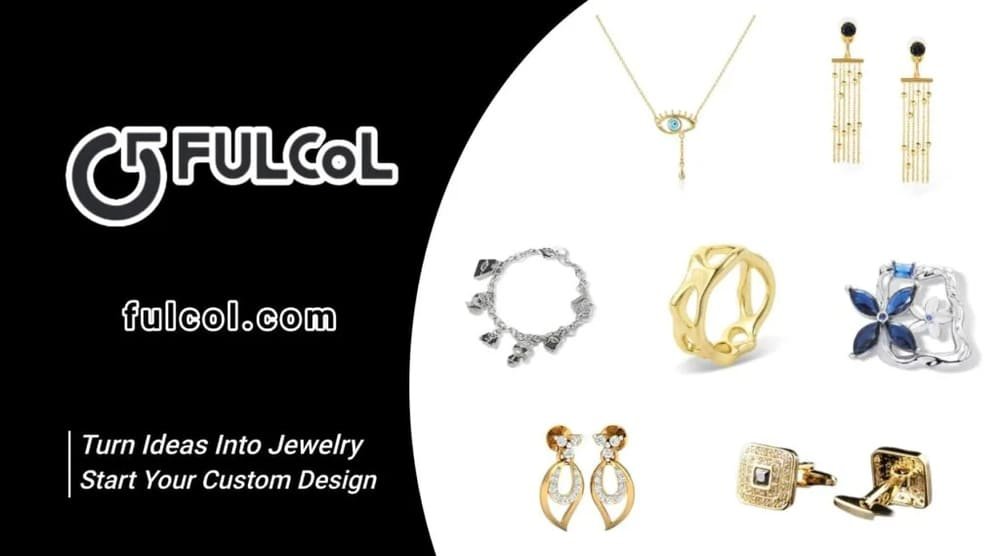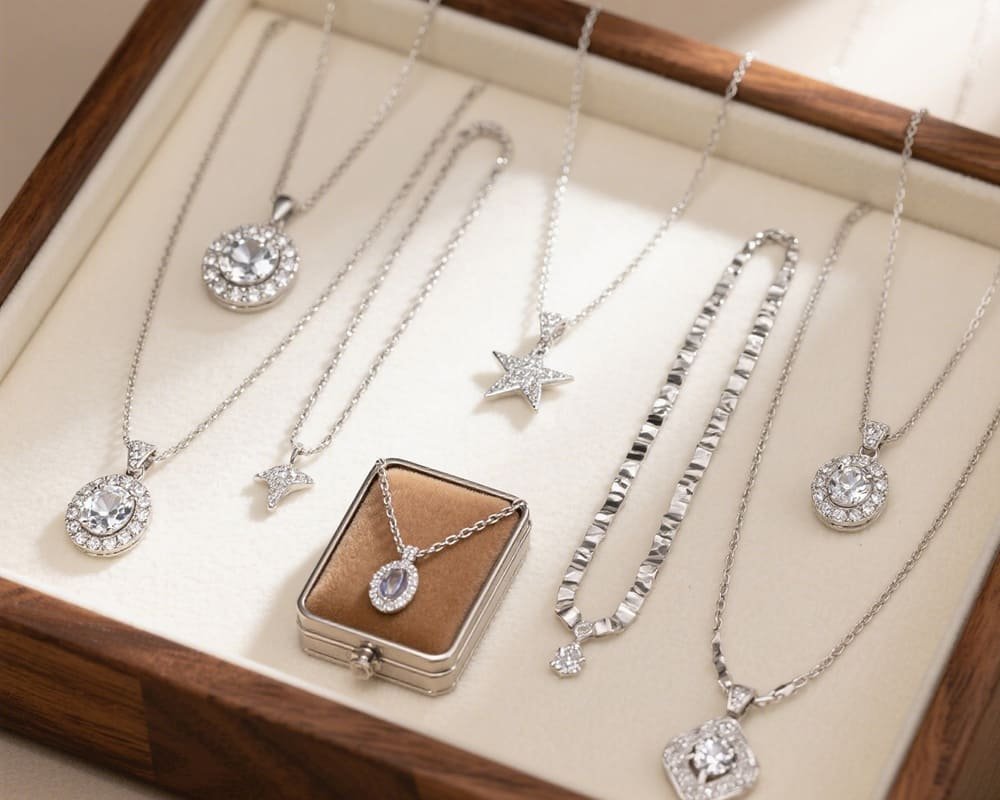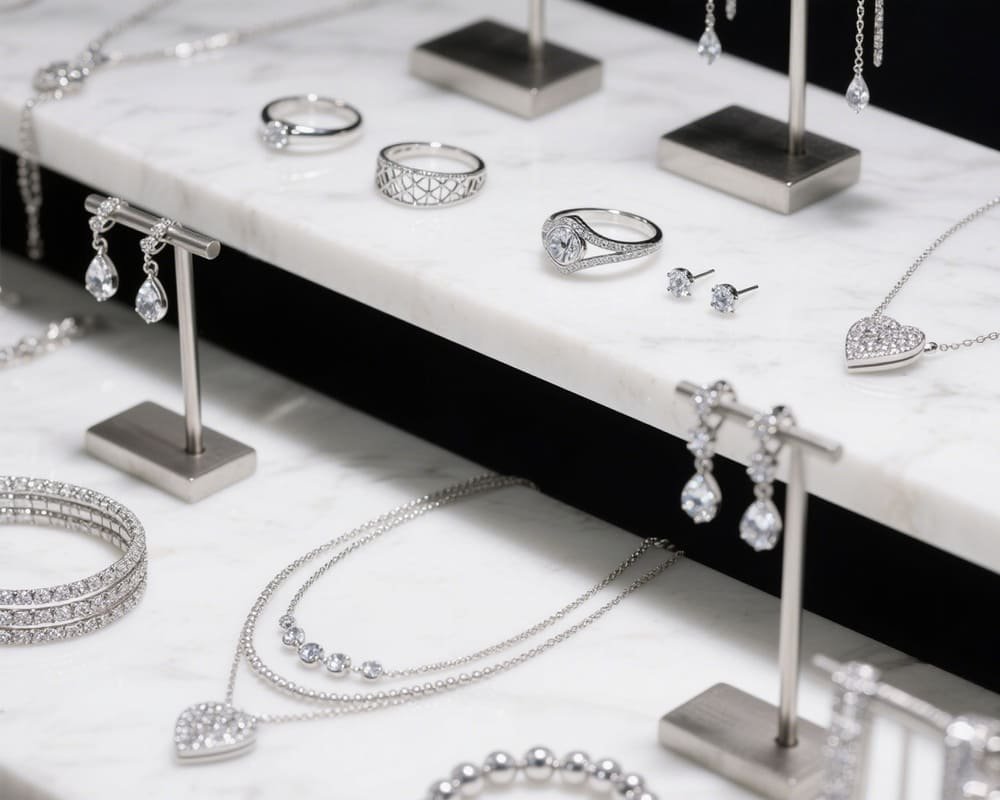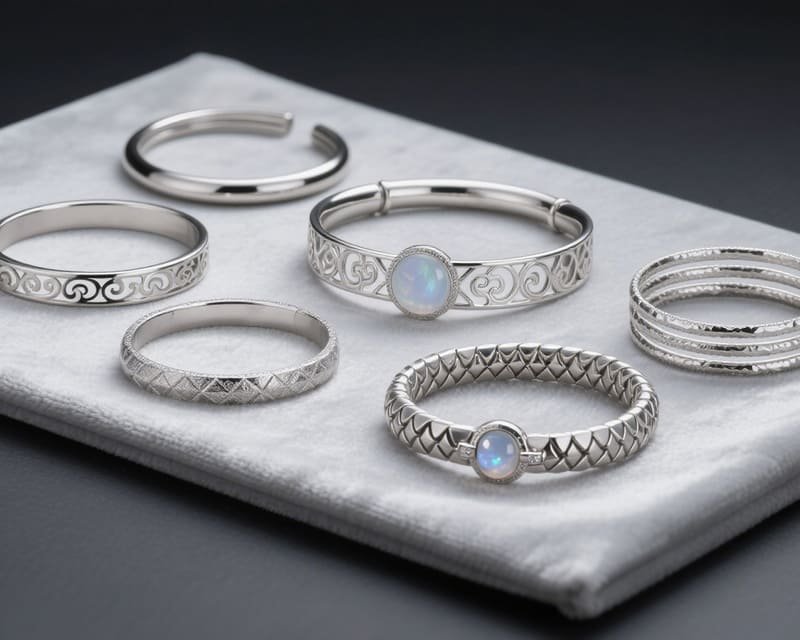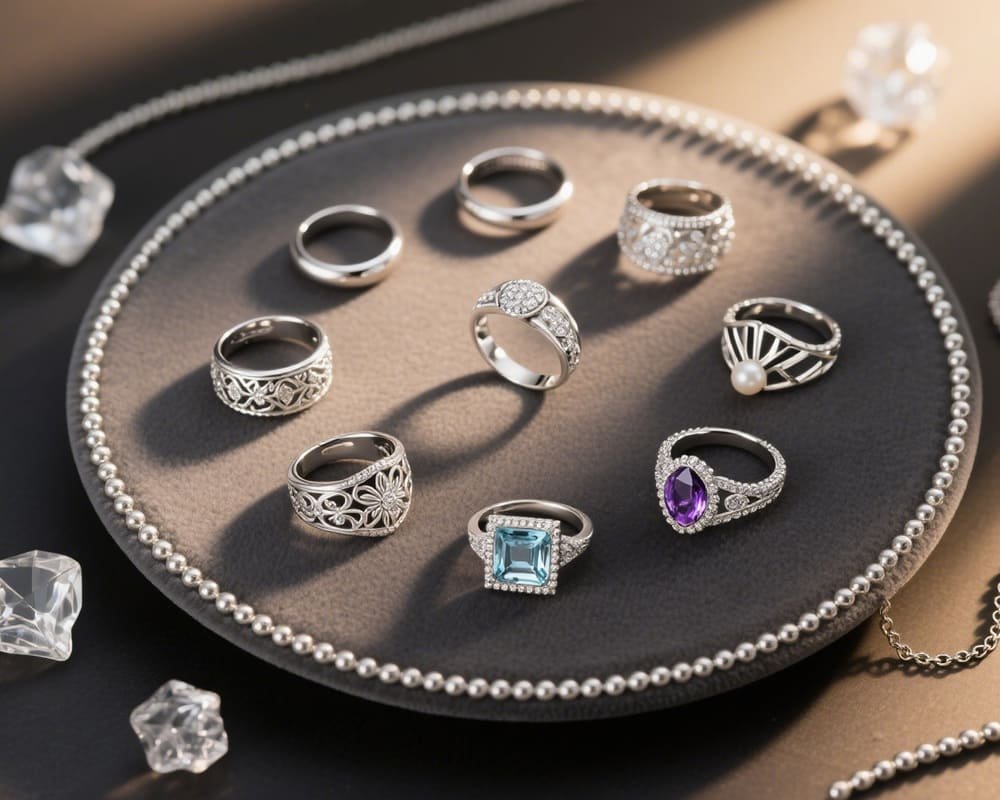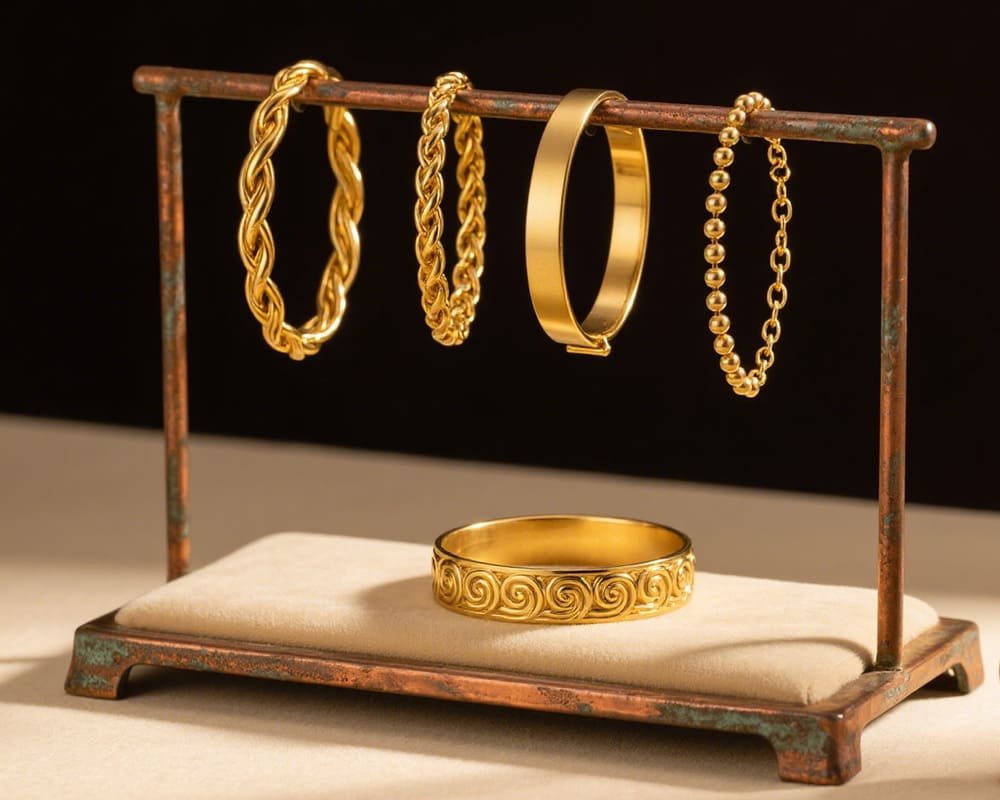Table of contents
Key Steps in Designing a Bespoke Silver Necklace
When creating a bespoke silver necklace, the design stage is the foundation of the entire process. It determines comfort, overall aesthetics, and personalization. Key steps include:
Clarifying Requirements and Design Inspiration
- First, determine the purpose of the necklace: daily wear, commemorating a special moment, or gifting someone.
- Inspiration can come from nature, artwork, cultural symbols, or personal experiences.
- Creating a mood board with colors, shapes, textures, and style elements helps communicate effectively with a custom necklace manufacturer and keeps design ideas clear.
Choosing Chain Type and Length
- Chain type directly affects texture and wearing comfort. Snake chains are smooth and flexible, ideal for delicate pendants. Box chains are sturdy and can hold heavier pendants. Cable or rope chains combine durability and visual appeal.
- Chain length should complement neck proportions and pendant size. Short chains highlight the collarbone, medium chains suit everyday wear, and long chains create layering effects.
- Reviewing physical samples or photos from the custom necklace manufacturer allows you to experience weight and texture before production.
Selecting Pendant Style, Size, and Theme
- The pendant is the visual focus of a bespoke silver necklace. Styles can include geometric shapes, animal motifs, symbolic elements, or engraved pendants.
- Size should match chain length and neck proportions to ensure comfort.
- Themes can reflect personal experiences, hobbies, or memories, enhancing personalization.
- Communicate with the custom necklace manufacturer to confirm the structure and material combination of the pendant for durability and aesthetics.
Color, Surface Finish, and Engraving Options
- Color options include natural silver, gold-plated, or black-plated finishes, each creating a unique style.
- Surface finishes can be high-polish, matte, or oxidized. High-polish creates shine, matte adds texture, and oxidation delivers a vintage look.
- Engraving can include names, dates, or phrases, ideally using durable engraving technology to maintain clarity over time.
By carefully following these steps, the design stage balances aesthetics, practicality, and personalization, forming a solid foundation for production.
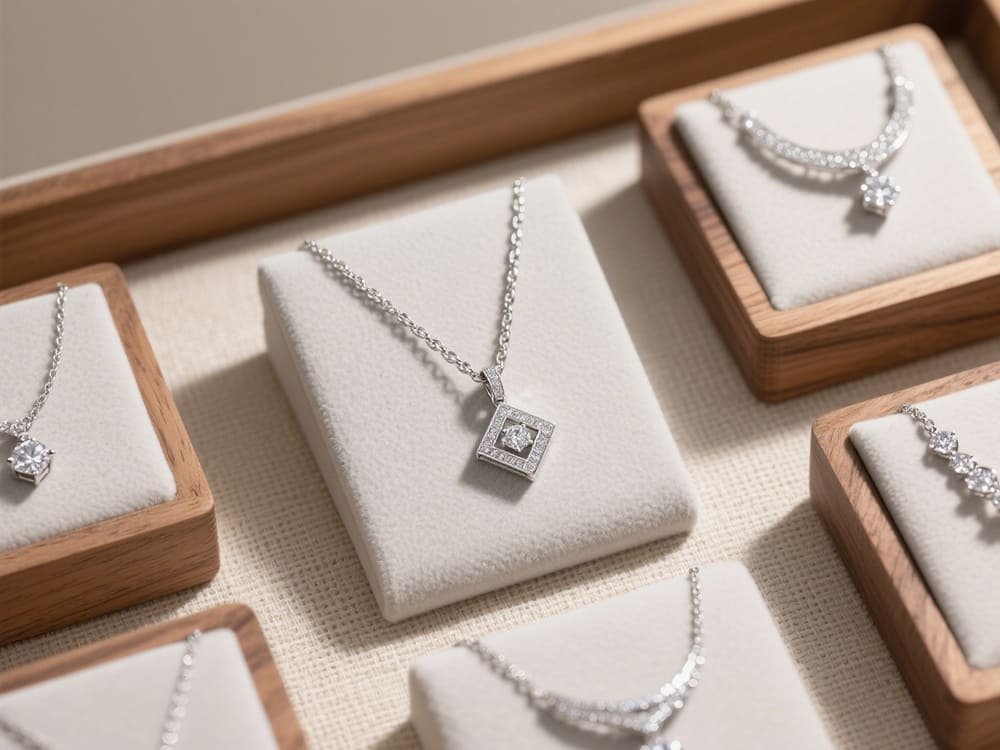
Materials and Craftsmanship
The materials and craftsmanship directly affect the quality, comfort, and durability of a bespoke silver necklace. Understanding these aspects helps you make informed choices:
Silver Purity and Certification
- 925 Silver (Sterling Silver) contains 92.5% silver, balancing durability and malleability, making it ideal for custom necklaces.
- Fine Silver has nearly 100% purity, soft and suitable for intricate engravings or collectible pieces.
- Silver-plated options are more affordable but less durable.
- Choose a custom necklace manufacturer with certifications or recognized industry standards to ensure authenticity.
Crafting Techniques
- Casting is suitable for complex shapes and batch production, providing high precision and consistent results.
- Handmade forging fits unique designs, giving each piece a distinct character, with relatively higher cost.
Surface Finishing Techniques
- Polishing enhances shine and reflects light beautifully.
- Gold plating adds color variation and protects against oxidation.
- Oxidation creates a vintage gray-black appearance, ideal for personalized styles.
Quality Inspection and Tools
- XRF testing quickly verifies silver content without damaging the piece.
- Magnet testing checks for iron or other magnetic impurities.
- Hardness testing ensures the chain and pendant resist wear and maintain durability.
Understanding materials and craftsmanship ensures that the bespoke silver necklace meets both aesthetic and functional standards.
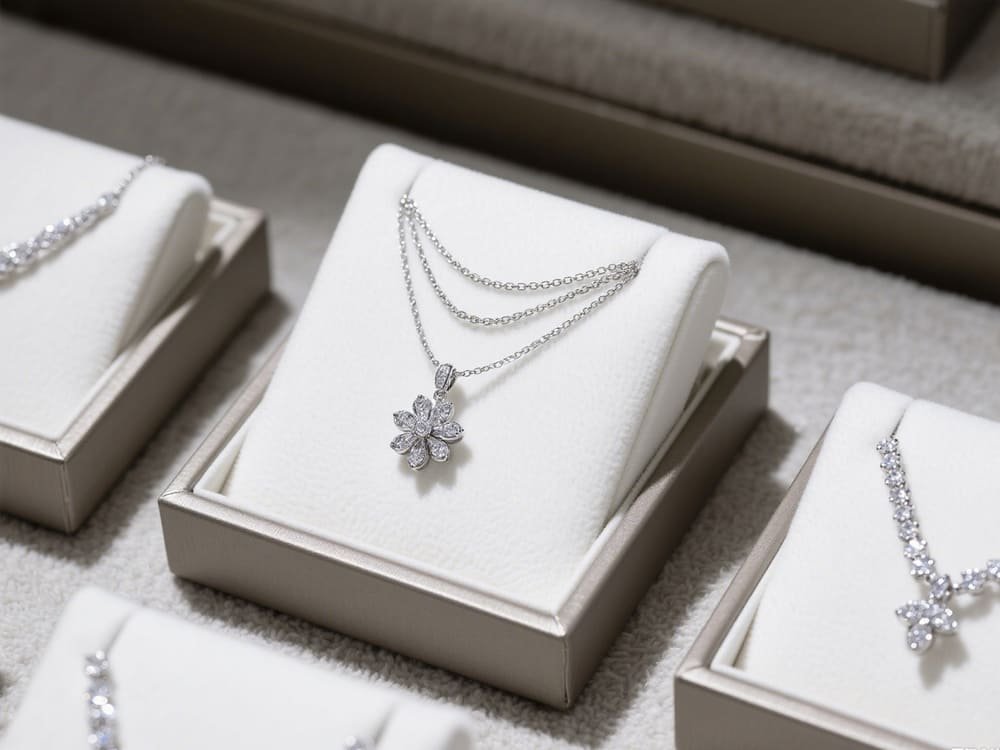
How to Choose a Reliable Custom Necklace Manufacturer
Choosing the right custom necklace manufacturer is key to producing a high-quality bespoke silver necklace. Consider these factors:
Factory Experience and Credentials
- Investigate the factory’s history, production scale, and main products.
- Check for ISO certification or industry-recognized standards, indicating regulated production and reliable quality.
- Experienced manufacturers usually have mature workflows to ensure that complex designs translate into high-quality finished products.
Portfolio and Customer Reviews
- Review past custom projects to evaluate craftsmanship and design execution.
- Read client testimonials to assess communication efficiency, service quality, and delivery reliability.
- If possible, visit the factory to observe production processes firsthand.
Sample Production and Prototyping
- A professional custom necklace manufacturer will offer sample production to confirm design details, dimensions, and comfort.
- Approving the sample before full production minimizes rework and material waste.
Flexibility for Small and Large Orders
- Reputable manufacturers can handle both small-batch custom orders and large-scale production.
- They can adjust production schedules according to client needs, ensuring timely delivery and cost control.
Selecting a professional custom necklace manufacturer ensures a smooth customization process and that the final bespoke silver necklace meets expectations.
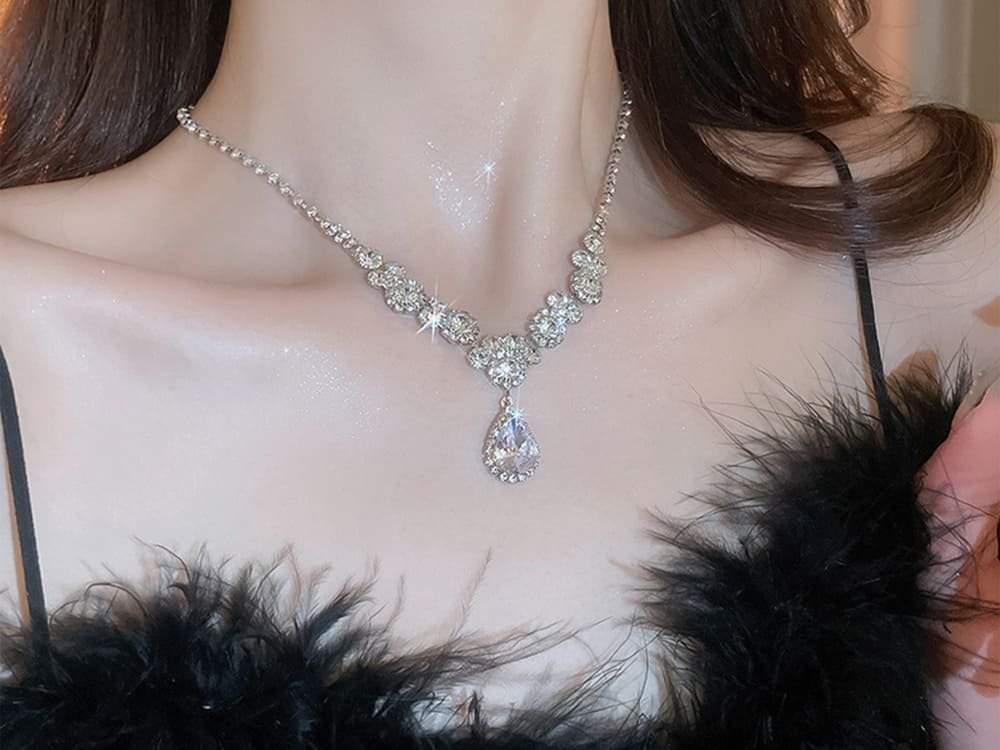
Care and Maintenance for Bespoke Silver Necklaces
Even a beautifully crafted bespoke silver necklace requires proper care to maintain its appearance and longevity. Practical maintenance tips include:
Daily Wearing Tips
- Avoid contact with chemicals such as perfume, detergents, or cosmetics.
- Remove the necklace when swimming or showering to prevent tarnishing.
- Avoid excessive pulling or impact to prevent chain breakage or pendant loosening.
Cleaning and Professional Care
- Gently wipe with a soft cloth to maintain shine.
- For tarnished or heavily soiled silver, use a dedicated silver cleaning solution.
- Periodically send pieces to a professional custom necklace manufacturer or jeweler for deep cleaning.
Storage and Anti-Oxidation Tips
- Store in a dry environment to prevent moisture-related tarnish.
- Use jewelry boxes or sealable pouches to minimize friction.
- Include anti-tarnish beads or desiccants to prolong shine.
Regular Inspection and Repairs
- Check chain connections and pendant loops regularly.
- Send any loose or damaged parts to a professional for repair promptly.
- Keeping the structure stable extends the lifespan and ensures safe wearing.
Proper care ensures that the bespoke silver necklace stays beautiful and wearable for years.
Frequently Asked Questions (FAQ)
- How long does customization typically take?
The customization timeline depends on design complexity. Typically, it takes several weeks from design approval to final delivery. Complex designs or special finishes may require longer. - How to ensure the final size fits properly?
Provide accurate neck measurements, confirm chain length and pendant proportions with the manufacturer, and approve a prototype or sample for comfort. - Price differences among silver materials
925 Silver offers a good balance of quality and affordability. Fine Silver is softer and suited for detailed engraving or collectibles. Silver-plated options are less expensive but less durable. - How to verify silver authenticity?
Check material markings and certifications, use professional tools like XRF testing to confirm silver content, and choose an experienced custom necklace manufacturer to ensure authenticity.
| Start Your Custom Order | Email: info@fulcol.com | Number: +86 13055603907 |
This article provides a comprehensive guide to designing, producing, and caring for a bespoke silver necklace, covering design steps, materials, craftsmanship, manufacturer selection, maintenance, and FAQs. By following these guidelines, jewelry lovers can ensure that each bespoke silver necklace is both aesthetically pleasing and functional.
